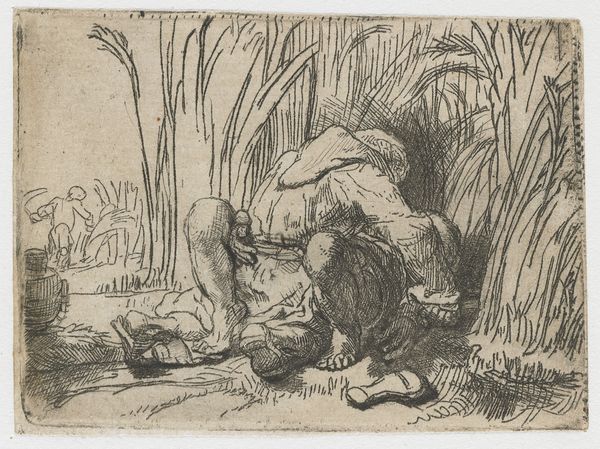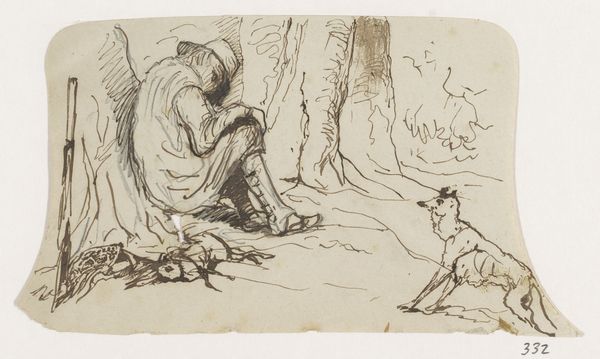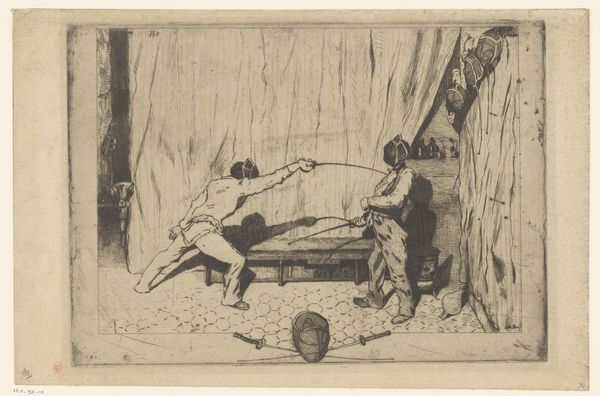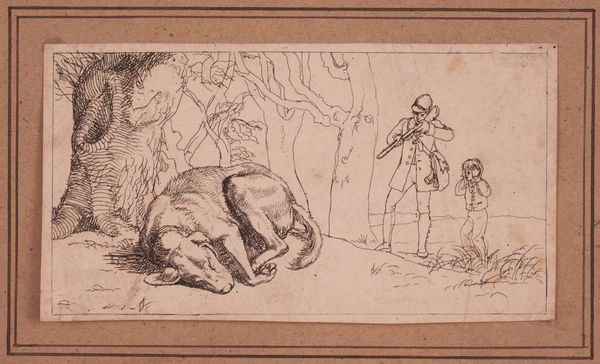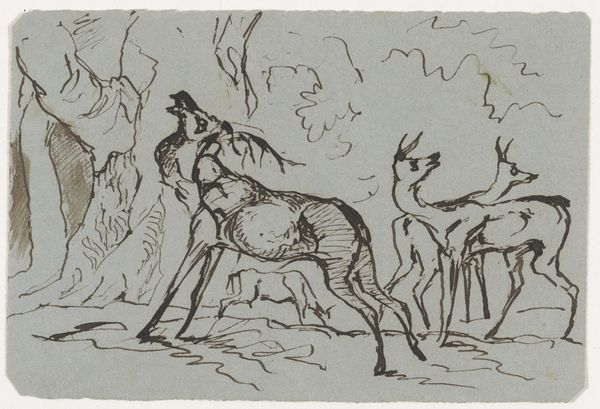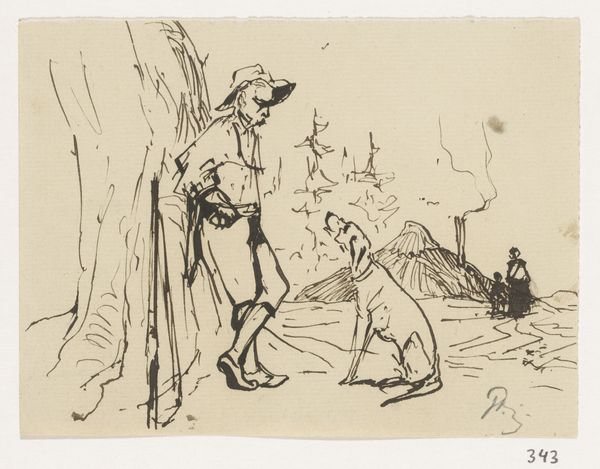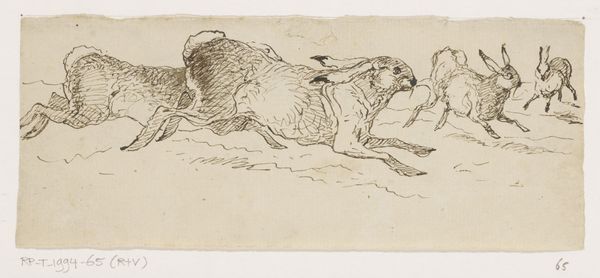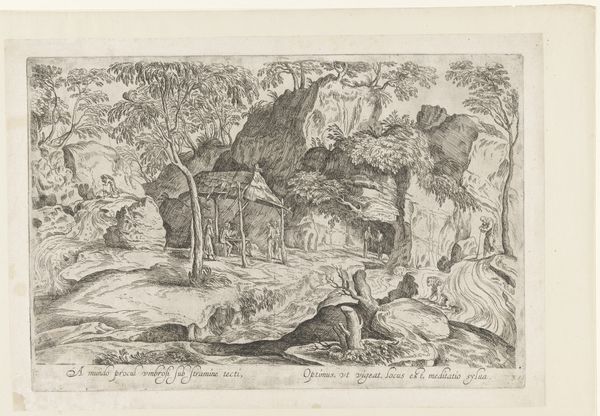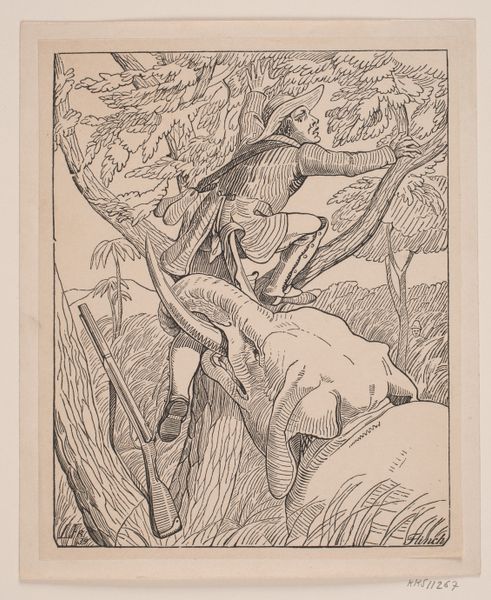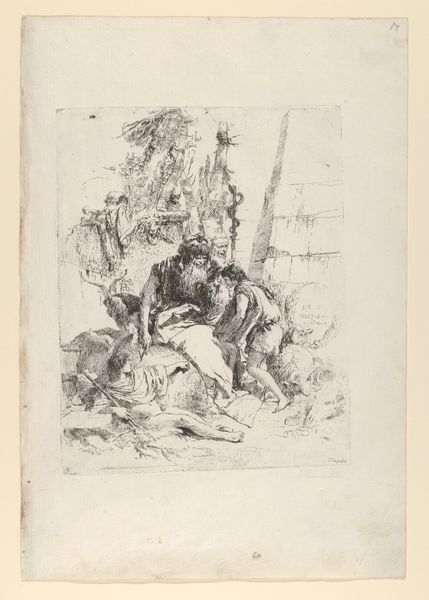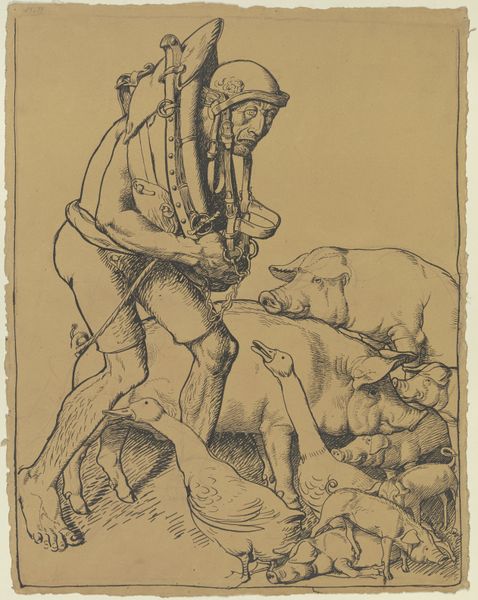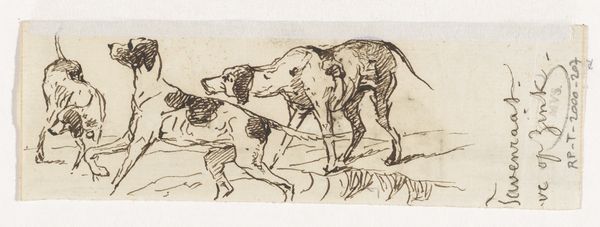
drawing, ink, engraving
#
drawing
#
narrative-art
#
animal
#
landscape
#
figuration
#
ink
#
engraving
Dimensions: 62 cm (height) x 116 cm (width) (bladmaal)
Curator: Here we have Lorenz Frølich's "Billede 8," created in 1838, now residing at the SMK, the National Gallery of Denmark. It's an engraving rendered in ink, featuring a sleeping animal, a man playing an instrument and a small child. Editor: The first thing that strikes me is the contrast between the heavily worked area depicting the sleeping creature – is that a wolf, perhaps? – and the spareness of the rest of the scene. It makes me wonder about the economics of labor behind the artwork. How many plates like this did the artist have to make, and how much was he getting paid for each? Curator: That’s a keen observation. Frølich was illustrating narratives for children and adults at a time when the relationship between power, narrative, and childhood was undergoing significant shifts. What does this pastoral scene tell us about societal expectations of these children being raised during that era? Does the adult figure suggest power structures or does he reflect creative control over shaping youthful perception? Editor: Interesting perspective. From a material standpoint, consider the paper itself. Its humble presence suggests this wasn't meant to be precious. Perhaps it was made for mass dissemination and consumption by a wider public? It wasn’t produced for elite gallery viewing, right? What does this tell us about the intention behind making this image? Curator: Absolutely. And that mass production facilitated the reinforcement—or subversion—of social norms around childhood and morality through easily distributed imagery. Note how the natural world is being framed alongside figures representative of a budding society: is it an idealized image, or is there a hint of the pressures that society is putting on the development of its new young citizens? Editor: I see that tension. Look at the detail in the wolf's fur – almost tactile. But it is countered with a relatively quick gesture to depict those spindly legs on those folks to the right. And that connects directly to what we understand about 19th century illustration - balancing material investment and reproducibility, perhaps suggesting the societal importance placed, or *not* placed, upon each image's message. Curator: Reflecting on our discussion, it's apparent that this deceptively simple drawing invites exploration beyond its surface: to discuss children's formative learning through exposure to visual imagery as much as social messaging. Editor: Yes, absolutely! For me, it’s a good reminder of the power held in commonplace items, like a page made of ink and engraving, for wide accessibility and potential social commentary.
Comments
No comments
Be the first to comment and join the conversation on the ultimate creative platform.
